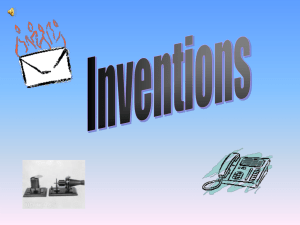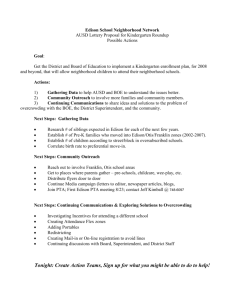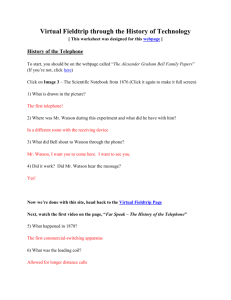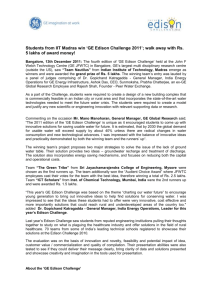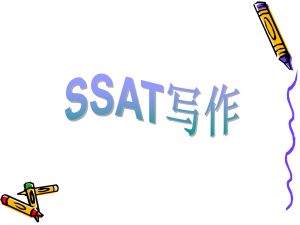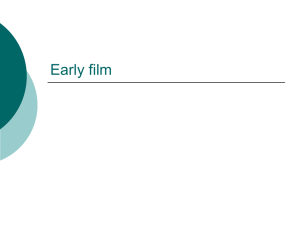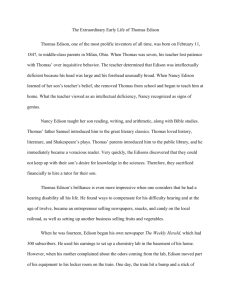THE ELECTRICAL WIZARD after John Dos Passos Edison was born
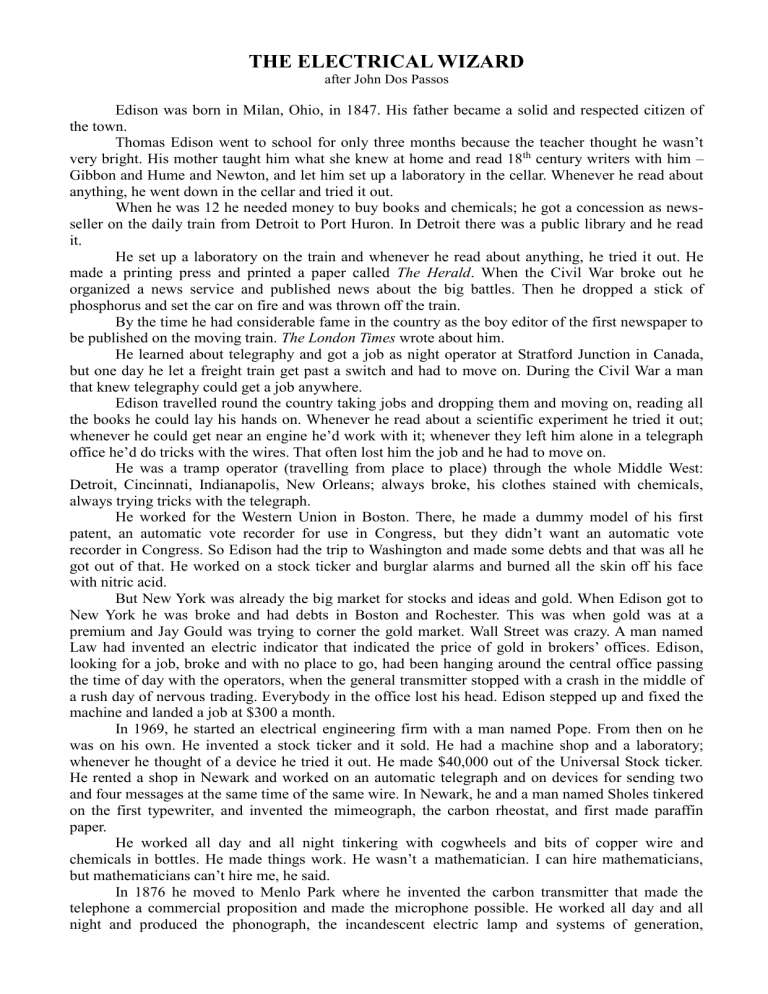
THE ELECTRICAL WIZARD
after John Dos Passos
Edison was born in Milan, Ohio, in 1847. His father became a solid and respected citizen of the town.
Thomas Edison went to school for only three months because the teacher thought he wasn’t very bright. His mother taught him what she knew at home and read 18 th century writers with him –
Gibbon and Hume and Newton, and let him set up a laboratory in the cellar. Whenever he read about anything, he went down in the cellar and tried it out.
When he was 12 he needed money to buy books and chemicals; he got a concession as newsseller on the daily train from Detroit to Port Huron. In Detroit there was a public library and he read it.
He set up a laboratory on the train and whenever he read about anything, he tried it out. He made a printing press and printed a paper called The Herald . When the Civil War broke out he organized a news service and published news about the big battles. Then he dropped a stick of phosphorus and set the car on fire and was thrown off the train.
By the time he had considerable fame in the country as the boy editor of the first newspaper to be published on the moving train. The London Times wrote about him.
He learned about telegraphy and got a job as night operator at Stratford Junction in Canada, but one day he let a freight train get past a switch and had to move on. During the Civil War a man that knew telegraphy could get a job anywhere.
Edison travelled round the country taking jobs and dropping them and moving on, reading all the books he could lay his hands on. Whenever he read about a scientific experiment he tried it out; whenever he could get near an engine he’d work with it; whenever they left him alone in a telegraph office he’d do tricks with the wires. That often lost him the job and he had to move on.
He was a tramp operator (travelling from place to place) through the whole Middle West:
Detroit, Cincinnati, Indianapolis, New Orleans; always broke, his clothes stained with chemicals, always trying tricks with the telegraph.
He worked for the Western Union in Boston. There, he made a dummy model of his first patent, an automatic vote recorder for use in Congress, but they didn’t want an automatic vote recorder in Congress. So Edison had the trip to Washington and made some debts and that was all he got out of that. He worked on a stock ticker and burglar alarms and burned all the skin off his face with nitric acid.
But New York was already the big market for stocks and ideas and gold. When Edison got to
New York he was broke and had debts in Boston and Rochester. This was when gold was at a premium and Jay Gould was trying to corner the gold market. Wall Street was crazy. A man named
Law had invented an electric indicator that indicated the price of gold in brokers’ offices. Edison, looking for a job, broke and with no place to go, had been hanging around the central office passing the time of day with the operators, when the general transmitter stopped with a crash in the middle of a rush day of nervous trading. Everybody in the office lost his head. Edison stepped up and fixed the machine and landed a job at $300 a month.
In 1969, he started an electrical engineering firm with a man named Pope. From then on he was on his own. He invented a stock ticker and it sold. He had a machine shop and a laboratory; whenever he thought of a device he tried it out. He made $40,000 out of the Universal Stock ticker.
He rented a shop in Newark and worked on an automatic telegraph and on devices for sending two and four messages at the same time of the same wire. In Newark, he and a man named Sholes tinkered on the first typewriter, and invented the mimeograph, the carbon rheostat, and first made paraffin paper.
He worked all day and all night tinkering with cogwheels and bits of copper wire and chemicals in bottles. He made things work. He wasn’t a mathematician. I can hire mathematicians, but mathematicians can’t hire me, he said.
In 1876 he moved to Menlo Park where he invented the carbon transmitter that made the telephone a commercial proposition and made the microphone possible. He worked all day and all night and produced the phonograph, the incandescent electric lamp and systems of generation,
distribution, regulation and measurement of electric sockets, switches, insulators, manholes. Edison worked out the first systems of electric light using the direct current and small unit lamps and the multiple arc that were installed in London, Paris, New York.
To find a filament for his electric lamp that would work, that would be a sound commercial proposition, he tried all kinds of paper and cloth, thread, fishline, fibre, celluloid, coconut shells, rose wood, bamboo, and the hair of a red-headed Scotchman’s beard. Whenever he got a hunch he tried it out.
In 1887 he moved to the huge laboratories at West Orange. He invented rock crushers and the fluoroscope and the reeled film for movie cameras and the kinetophone that was the first talking movie.
Thomas A. Edison at 82 worked 16 hours a day. He never worried about mathematics or the social system. He worked 16 hours a day trying to find a substitute for rubber. Whenever he read about anything he trie4d it out; whenever he got a hunch he went to the laboratory and tried it out.
